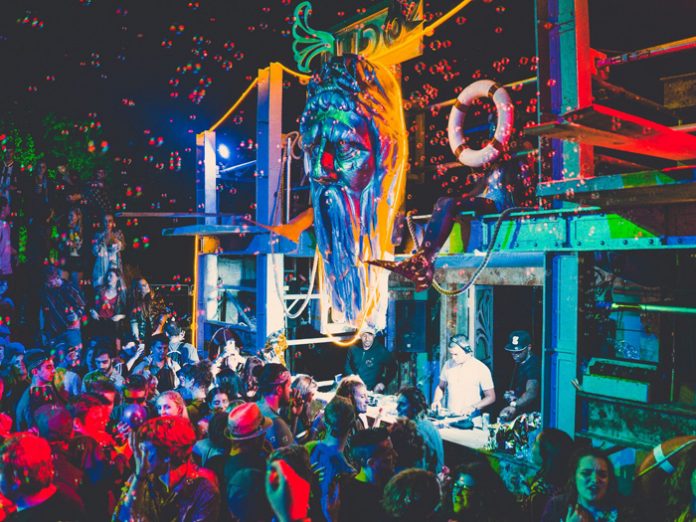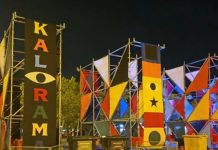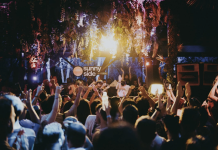The Bearded Butler was born at Meadows in the Mountains in Bulgaria, a picturesque boutique festival with a mountainous backdrop and ‘penchant for social experimental adventure’. The production company was conceived as an affront against mass production, drawing upon a unique and extensive network of craftsmen and professionals to manifest the visions and develop the brand identities of various entrepreneurs and pioneers.
Insights spoke with Damian Sasse, the eponymous Bearded Butler himself and Meadows’ co-founder, about the team’s respective backgrounds, their environmentalist credentials, and how festivals can further differentiate themselves through aesthetic considerations.
Festival Insights: Yourself and your creative companion Alexandra Duran seem to have very eclectic backgrounds – spanning illustration, design, and even modelling. Similarly, Bearded Butler works not just within the festival industry, but also across the realms of food & beverage, fashion, and lifestyle. How have these various disciplines helped to inform The Bearded Butler’s unique appeal and approach?
Damian Sasse: When we met I was working at the Red Gallery in Shoreditch. Alex was a talented 22 year old student in love of the creative, vibrant and artistic universe that East London encapsulates. I was running my small music brand called The Smokey Bear and Alex was applying to study Illustration at London College of Fashion.
My background lies in the iconic 90s when house music was flourishing in Ibiza, where I was brought up. Also being involved working at Manu Mission – the godfather of spectacle, music and liberty – channelled my life into being a dedicated servant or butler to music forever.
Alex’s background lies in the flamboyant fashion world, the dainty home of a baker in Seville, and in regular travelling to Japan following an aikido master.
Alexandra Duran: From fashion, I learned how to differentiate beauty canons and the importance of aesthetics. From my influence of Zen and Japanese culture, I learned how to communicate concepts to the public through my illustrations as anime artists do. The Bearded Butler’s branding is pretty much a parallel universe, which tells a real story. I used the profile of philosopher Friedrich Nietzsche to draw the logo, who asserted that art is reality.
FI: The Bearded Butler is perhaps most renowned for its work on Meadows in the Mountains, which was founded by yourself and members of your family. How are Bearded Butler and Meadows related in terms of ethos and approach?
DS: As an ambitious visionary, I conceived Meadows alongside my parents and my younger brother Benjamin. I wanted to share my love for the outdoors, music and arts with the world. This idea flourished into an artistic and green movement, which now attracts lots of people in need to discover their belonging to nature with the intimate and spiritual impregnation of music.
When Alex came to Meadows to work as my assistant, she doughtily proved her skills and tenacity. From experimenting with the natural surroundings and free materials we found in the woods to create and build Meadows, Alex and I ended up collecting pallets and reclaimed materials for our first projects in the concrete jungle of London. The Bearded Butler was born by designing the interiors and shop fronts of food and beverage brands such as Burger Bear and via enigmatic DJ booths for underground music raves as Just Jack.
FI: The London based Ritual crew has recently announced a series of eight events throughout winter, with The Bearded Butler set to apply its unique visual stamp on the proceedings. What exactly can attendees expect?
DS: We will expect attendees to immerse themselves within the music and make as much impact with the setting as possible. We try to align ourselves with the position of the public by listening to the tracks and getting involved with the music and theme as deeply as possible.
FI: Bearded Butler possesses a self-proclaimed ‘social conscience’ and commitment to sustainable practices. How do you ensure that your work makes as little impact on the environment as possible?
DS: We started collecting reclaimed materials and second hand sets; this was a way to be environmentally friendly. We now ensure that we give a second life to all our sets or donate them to festivals with lower budgets.
FI: With the UK seeing a proliferation of aesthetically and musically similar festivals over the last decade, do you think events are becoming increasingly dependent on visual and experiential elements to differentiate themselves from the pack?
DS: Festivals, music, food & beverage, and brands are all part of the same spectacle – all of these individuals have an identity that needs to be communicated to the public. Aesthetics are the most important aspect of festivals as a response to music and the meaning of the current avant–garde.
We think that festivals are responsible for the course of the avant-garde and everyone wants to add to it, whether participants and organisers.
FI: You make mention of your vast network of ‘foot soldiers’, which includes carpenters, set builders / designers, scenic painters, and all manner of skilled labourers. How do you ensure that those you select are the best at what they do?
DS: Our foot soldiers have an interesting story, also a huge sense of duty and passion for the projects we offer them. They also love people, drink beer and genuinely please the clients with their work. The Bearded Butler has gathered this network thanks to the hipper connected festival world, social media, and the advantage of being involved working at big UK festivals.





